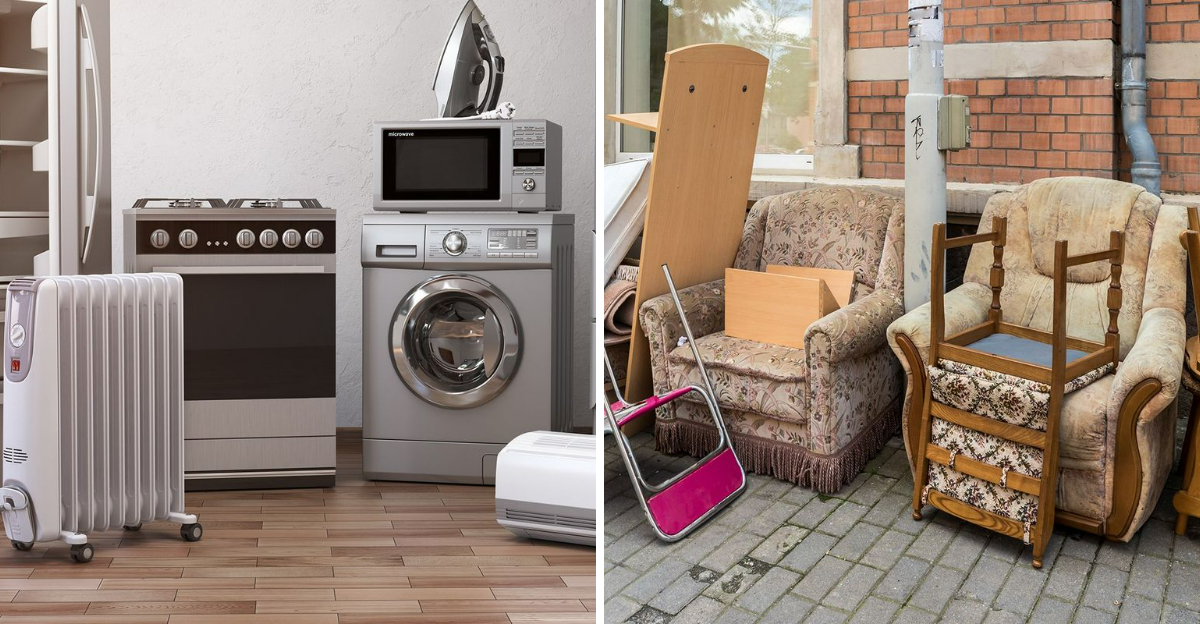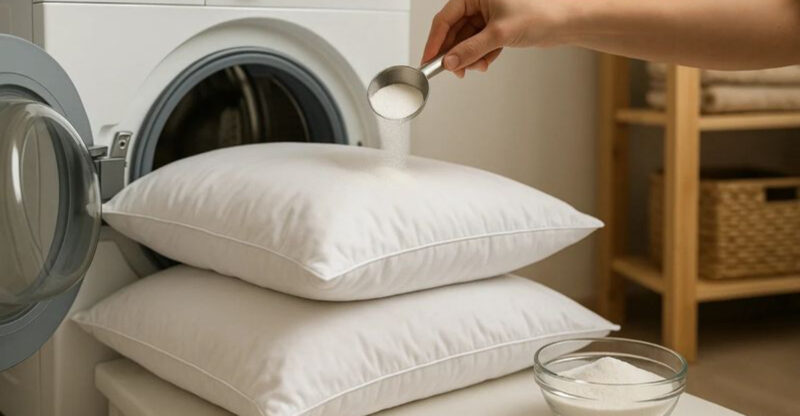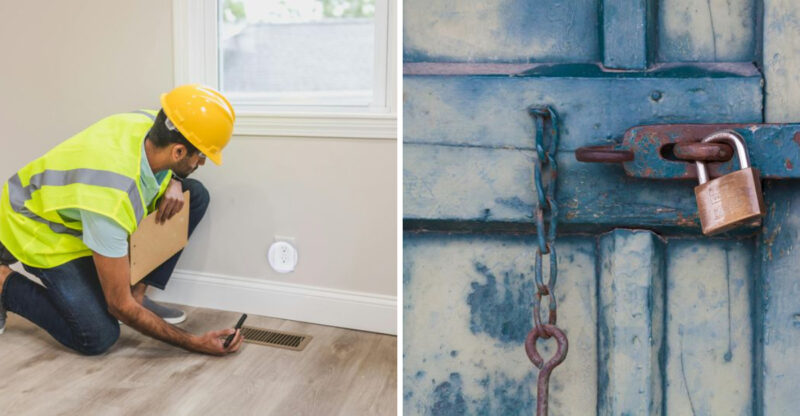10 Things Pennsylvania Sellers Leave Behind That Buyers Secretly Dislike

Moving into a new home should feel exciting, but sometimes sellers leave behind items that make buyers cringe instead of celebrate. In Pennsylvania, certain leftovers have become common frustrations for new homeowners who expected a clean slate.
I want to share the most common things buyers wish sellers had taken with them, so you can avoid these mistakes whether you are buying or selling.
1. Outdated Window Treatments
Heavy floral drapes from the 1980s still hang in the living room, along with dusty venetian blinds that barely function. These window coverings clash with modern decor and often smell musty.
Removing and replacing them becomes an immediate expense buyers had not budgeted for. I have seen homeowners spend hundreds of dollars just to make their windows presentable. Sellers assume they are being helpful by leaving them, but most buyers would prefer bare windows to outdated fabric.
2. Stained Carpeting in Basements
Basement carpet with mysterious stains and a strange odor greets buyers on move-in day. Water damage, pet accidents, or years of neglect have left the flooring beyond salvaging.
Ripping out old carpet is dirty work that requires renting equipment or hiring professionals. Buyers expected a finished basement, not a renovation project waiting to happen. This leftover item often signals other hidden problems like moisture issues that sellers knew about but did not disclose properly.
3. Broken Appliances That Do Not Work
An ancient refrigerator hums loudly in the garage but does not actually cool anything anymore. Sometimes sellers leave behind dishwashers or washing machines that stopped working years ago.
Appliance removal services charge hefty fees, and buyers resent paying to haul away someone else’s trash. I always recommend testing every appliance before closing day. Discovering broken equipment after moving in creates unnecessary stress during an already hectic time for new homeowners.
4. Chemical Containers and Fertilizers
Half-used bottles of pesticides, herbicides, and fertilizer bags clutter the garage shelves. Many of these chemicals have expired or contain ingredients no longer considered safe.
Proper disposal requires following specific regulations, and buyers worry about liability if children or pets access them. Sellers often overlook these items during their final walkthrough. Nobody wants to inherit potentially dangerous substances they did not purchase and have no use for in their new home.
5. Rusty Lawn Equipment and Tools
A broken lawn mower sits in the garage alongside rusted rakes and shovels that have seen better days. These tools no longer work properly and take up valuable storage space.
Buyers wanted to park their car in the garage, not play tetris with junk equipment. Hauling away metal items requires special disposal or recycling arrangements. Many new homeowners feel annoyed that sellers treated their property like a dumping ground instead of respecting the transition.
6. Construction Debris and Leftover Materials
Piles of wood scraps, drywall chunks, and old tiles fill a corner of the garage from renovations done years ago. Sellers completed their projects but never bothered cleaning up the leftover materials.
Buyers must rent a dumpster or make multiple trips to the dump, adding unexpected costs to their moving budget. I find this particularly frustrating because it shows a lack of consideration for the next homeowner. A clean property demonstrates respect and professionalism during the selling process.
7. Random Furniture in Poor Condition
A sagging couch sits in the basement alongside a wobbly table and chairs with missing legs. This furniture is too damaged to donate but too bulky to fit in regular trash pickup.
Buyers must arrange special junk removal, which can cost several hundred dollars depending on the amount. I have watched families postpone unpacking because they first had to clear out unwanted furniture. Sellers should either donate usable items or pay for removal themselves before handing over the keys.
8. Shelving Units Mounted Poorly to Walls
Wire shelving sags from walls in the garage, installed with inadequate anchors that left multiple holes. Removing these units reveals damaged drywall that needs patching and painting.
Buyers face repair costs they did not anticipate during the home inspection. I recommend sellers either remove shelving properly or install quality units that actually add value. Shoddy installations suggest the seller took shortcuts elsewhere in the home, which makes buyers nervous about what else might need fixing soon.
9. Propane Tanks and Fuel Containers
Empty or partially filled propane tanks sit beside the garage, along with old gasoline containers of questionable age. Buyers worry about safety and proper storage requirements for these items.
Many recycling centers will not accept old fuel containers, making disposal tricky. I always tell sellers to take these with them or arrange proper disposal before closing. New homeowners should not have to figure out how to safely handle flammable materials left behind by strangers who previously lived there.
10. Old Paint Cans in the Basement
You walk down to your new basement and find a collection of crusty paint cans from decades past. Most are half-empty, dried out, or so old the labels have faded beyond recognition.
Disposing of paint properly requires a trip to a hazardous waste facility, which costs time and money. Buyers feel frustrated because they did not create this mess but now must deal with it. Sellers often forget these cans exist until it is too late to remove them before closing day.






